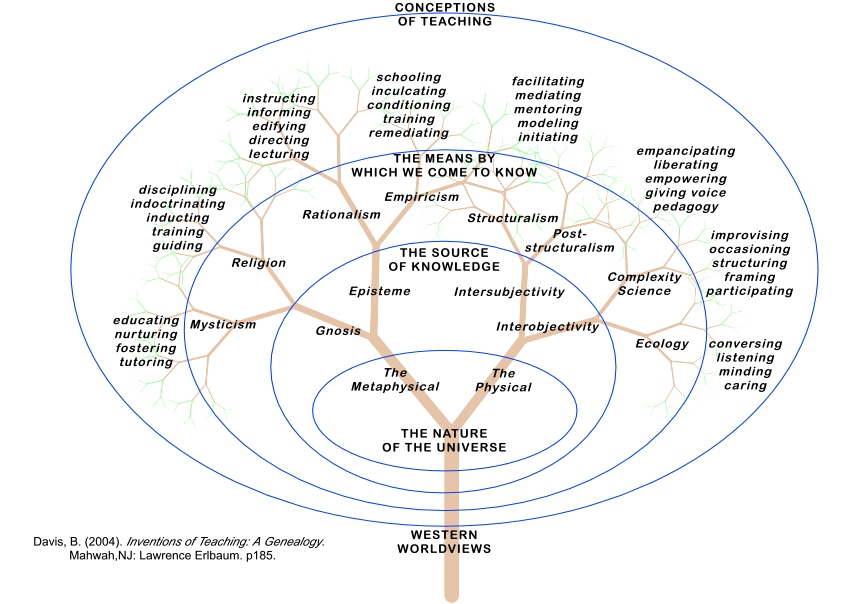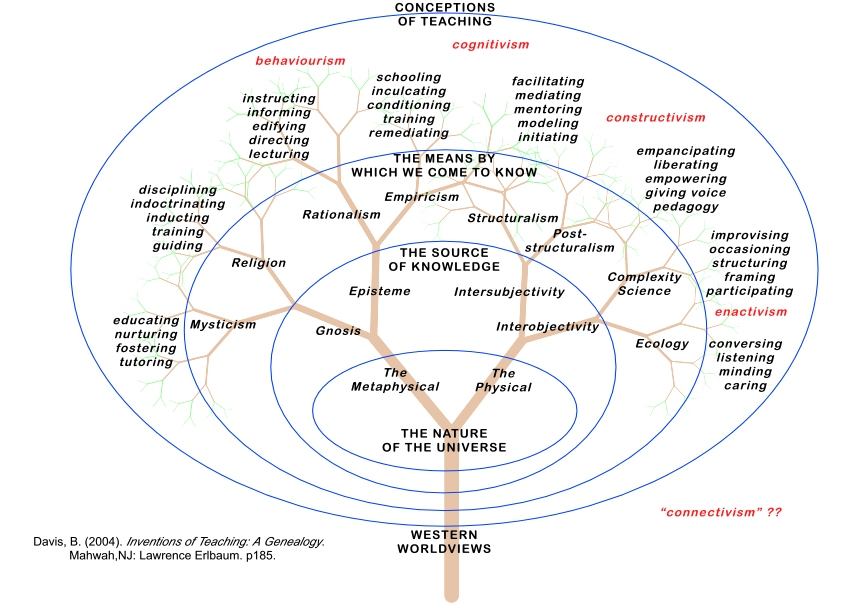CCK08 – In my student days in South Africa, a local hit song imprinted on those biochemical pathways in my brain that connect me through memory and music to 1984. Niki Daly’s “Is it an ism or is it art” didn’t really comment on the UDF, school boycotts, and the rising tide of resistance to apartheid – but it did make us arty types think more deeply about the relationship of artists to critics, the reification of artistic fads, and I suppose the album as whole did question the white dream of insulated existence in the larney suburbs….
The first 3 weeks of CCK08 evoked that song for me as I trawled through the blogs and lurked in the Moodle forums – skimming the posts, assimilating and accommodating, just immersing myself in the network in a passive kind of a way, feeling a tad guilty as I took precious time out of a busy RL day to follow some threads. Got a feel for it now and can hopefully start contributing back into the conversations.
I started out doubtful that ‘connectivism’ provides anything really new or useful for education theory – a theory of learning needs to explain a lot more than how code, electricity and screens can link learners together. But connectivism does seem to be pointing towards that something more … But after 3 weeks I’m still not clear about where is connectivism is pointing, or how it fits in with my own schema of what learning/teaching is. For there can be no learning without teaching, and that is not the same as saying that a person called a ‘teacher’ is necessary for learning to take place… but that is another conversation….
Back to the song memory trace though. In relation to ‘connectivism’ – what kind of ‘-ism’ is it ? There is a proposition that ‘connectivism’ is some kind of advance on the cliched triptych of behaviourism-cognitivism-constructivism. That ‘connectivism’ somehow ‘is unique in bringing together ideas of neuroscience, cognitive science, network theory, complex systems, and related disciplines.’ A thread in the Moodle forum suggests that ‘connectivism’ is ‘behaviourism redux’. Catherine/Prokofy relentlessly exposes the ideological underpinnings of what she sees as ‘technocommunism’ and ‘digital maoism’. Stephen goes to the philosophers and brings in ‘intentionalism’, ‘associationism’ and ‘realism’ – not to mention ‘connectionism’. Plenty of criticism and dialogism as well. Now if only we had some kind of virtual prism to focus all these scattered feeds and posts into something coherent (ah but maybe that’s where the individual brain comes into play 🙂 )
When it comes to the -isms, I’m an enactivist. That is, I believe that enactivism is the -ism that provides the most appropriate and useful theoretical context for the ways in which learning and teaching is developing in the networked world. I suggest that if ‘connectivism’ is ever going to have any theoretical legs to stand on, it needs to clearly delineate its affinities with and differences from enactivism. As a way of starting this conversation I’ll revisit Brent Davis (a lot of enactivists seem to hang out in Canada ) and his wonderful genealogy called Inventions of Teaching. I want to put the focus on teaching because it’s all too easy in ‘connectivism’ to forget that teaching is actually an integral part of learning. I mean, when Stephen claims that the network has actually replaced the teacher – “content from elsewhere in the network will, if it is of value, make its way to you. That, indeed, is the value of working in a network” – I think it’s really important for those who see themselves as educators and make their living as teachers to question this somewhat dodgy ideology.
In Inventions of Teaching Davis sets out a comprehensive view of conceptions of teaching as they relate to the main currents of Western thought in “an attempt to make sense of the knots of belief and commonsense that have underpinned efforts at teaching over the past few millennia”. The main aspects are summarised in this diagram (click on it for a larger version):
There is a lot of information condensed here and I recommend this text to anyone wanting to understand how teaching situates itself in relation to the key branches and bifurcations in Western thinking. The point for this post is how ‘connectivism’ fits in – or not – to this way of seeing the variation in educational discourse on teaching. So if we try and map the -isms onto this diagram it would look something like this:
On the face of it, ‘connectivism’ should be located on the Interobjectivity – Complexity Science/Ecology bifurcation – which is where I have situated enactivism. There doesn’t really seem to be anywhere else – I don’t think that it is behaviourism in another guise – and although there might be some mystical elements and some quasi-religious dogma (Catherine ? 🙂 ), I don’t believe that this is where George and Stephen are intending to go. Or is it a completely new branch splintering off on its own somewhere ?
But to get onto this tree, ‘connectivism’ needs to define its conceptions of teaching. And this is where ‘connectivism’ shoots itself in the foot (well, sort of). If learning is merely the process of creating and traversing the connections in the network, where is the body of the learner, and where indeed is the teacher ? Does the body itself become some kind of Tron-like entity in the matrix of infinite connectivity ? I’m not dismissing ‘connectivism’ per se, because I do think that we need to expand Davis’ genealogy by incorporating the insights and new approaches to teaching that are emerging from networked learning, and ‘connectivism’ may have something to offer here. But let’s see if we can use the existing -isms before assuming that the latest neolog-ism is simply going to replace centuries of educational wisdom …



 ) – and I guess the numbers of participants on the course also suggest that there is something going on … ?
) – and I guess the numbers of participants on the course also suggest that there is something going on … ?